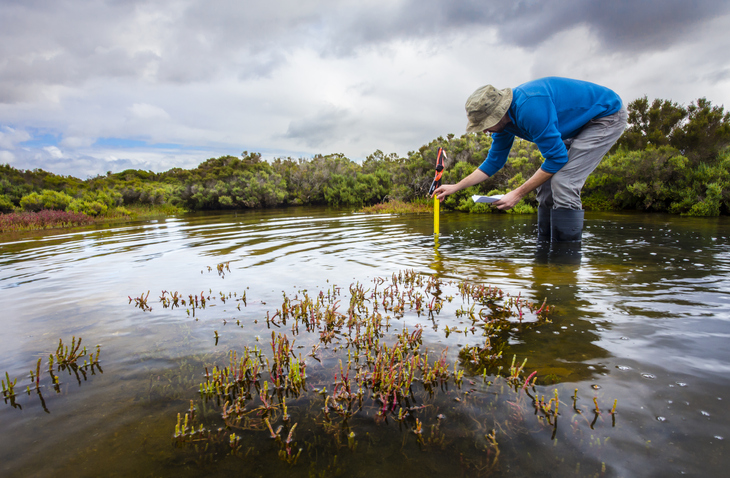- SERVICES
- HIGHER EDUCATION MARKETING
- ENGAGEMENT & ENROLLMENT MANAGEMENT
- STUDENT RECRUITMENT AGENCIES
- PROFESSIONAL EDUCATION & TRAINING
- WHO WE ARE
WHO WE ARE
Learn more about Keystone Education Group, including our leadership structure, why choose Keystone as your educational partner, and company press releases.
QUICK LINKS
- RESOURCES
RESOURCES
Find a range of helpful resources to help with your educational marketing. From on-demand webinars, reports & data, to customer testimonials and our downloadable media kit.
QUICK LINKS
- NEWS
- REQUEST A CALL

- Keystone Higher Education News
- Rising Popularity of Environmental Programs
Climate change and sustainability are real issues affecting our world. These problems — and the zeal to solve them — is why more American colleges and universities are offering environmental science programs for students to learn how to find long-term solutions for future generations.
Future generations, of Z and Alpha, want to be problem-solvers, fix the environmental crisis, and make the world better. And they are now in college or beginning their college search.
Environmental science majors are impacting higher ed institutions with booming enrollment in their programs. Data from Burning Glass shows the number of environmental science degrees awarded each year has increased by 24% since 2016.
Undergraduate students are strongly interested in sciences involving the natural and physical world. In our 2021 State of Student Recruitment Survey, we found that natural sciences, life sciences, and environmental studies ranked among the top 18 desired fields of study in the U.S.
What is an environmental science degree?
Environmental science is an interdisciplinary study that combines ecology, biology, zoology, oceanography, atmospheric science, soil science, geology, chemistry, and more.
It provides a foundation in the physical and life sciences, focusing on how the natural, physical, and man-made world can coexist and thrive.
An environmental science degree also draws heavily from the social sciences, such as economics, business, and sociology — making it a practical degree with a plethora of career options.
“Anybody who’s completed college already has valuable skills for the workplace. And environmental science degrees specifically provide an abundance of transferable skills,” says Alaina G. Levine, a STEM career coach and president of Quantum Success Solutions, LLC.
The career possibilities are endless — environmental compliance, forest fire prevention, policy, and research. Graduates can pursue careers as environmental engineers with an average annual salary of $96,820, conservation scientists ($63,750), and wind turbine technicians ($56,260) — one of the fastest-growing occupations in the U.S. Environmental science majors have increasingly found jobs in sales, planning and analysis, healthcare, IT, marketing, and agriculture.
Why market your environmental science program now?
There has never been a better time to market your environmental science programs to prospective students. Why the surge in interest? We can thank Generation Z and Generation Alpha.
Generation Z
Sustainability and climate change are world issues that Gen Z pays attention to. They see what is happening in the natural and physical world, from a surge in natural disasters and heatwaves to unsafe drinking water and the disruption of the food supply.
“They’re just pretty aware of what’s going on around them, and the environment is certainly one of those issues,” said R.J. Woodring, associate dean of education programs at Indiana University Bloomington.
The solution to these issues is not easy, but these students need a place to start, and it can fall in place with a degree in environmental science. It not only provides a solid foundation in fields of science, along with hands-on experience through labs and field study, but teaches problem-solving skills they can take anywhere. They also want a better world to live in — for themselves and the next generations.
As R.J. Woodring said, “They want to make sure they have clean air, clean water, nice parks and natural resources for them and their children.”
How do you market your program to Gen Z?
Gen Z wants to know how your college or university's program offers a practical, real-world education.
Start by creating YouTube videos with students doing fieldwork and traveling to unique parts of the world or even close to campus. Create a student vlog where current students document their field research in Alaska or their volunteer work in the Amazon. Maybe it's showing students using GIS technology to create smart cities.
Keep your program as the main recruitment focus. Feature areas of study the program touches on, practical skills students will gain, and highlight internship opportunities and career outcomes. Use videos and testimonials on your website and social media to show just how far they can go.
Generation Alpha
In just four years, the first of Gen Alpha will be enrolling in college. In fact, many are already beginning their college search.
These students have a hyper-heightened awareness of the world around them, even more than Gen Z. What Gen Alpha can boastfully proclaim is their profound hope for the future. It's because they tend to see things differently. And why not? Smartphones were placed in front of them before they could talk.
Through advanced technology, Gen Alpha has a window to see different perspectives across the globe and can see innovative ideas take shape in real-time. Gen Alpha feels empowered to act because technology allows them to.
How do you market your program to Gen Alpha?
Gen Alpha wants to know how an environmental science degree will make a difference. They want to know the impact your program has in the world.
It’s crucial to market to these students now. Leverage storytelling, YouTube videos, Instagram, and use your CRM to launch an email drip campaign. Share student testimonials on TikTok, showcase clubs and organizations, and feature volunteer and internship opportunities.
Don't wait to market your program. Generation Z and Generation Alpha are ready to discover ways to make our natural and physical world a safer, better place. It can all start with your environmental science program.
More about:
Related Tags
Just For You
Top Picks
Higher Ed Chats Podcast
Listen to the latest episodes of our Higher Ed Chats Podcast - new format for 2024. Hear from Higher Ed thought-leaders from around the world!
Who Will Win The Keystone Awards?

Watch the Keystone Awards Ceremony to see the winners of the 2025 Keystone Awards!
Subscribe
to get the latest news and updates





